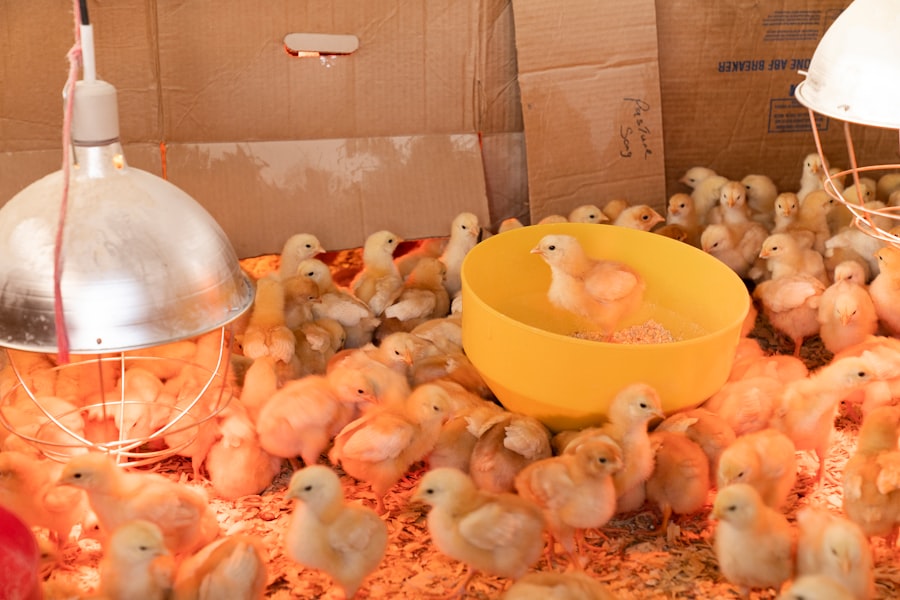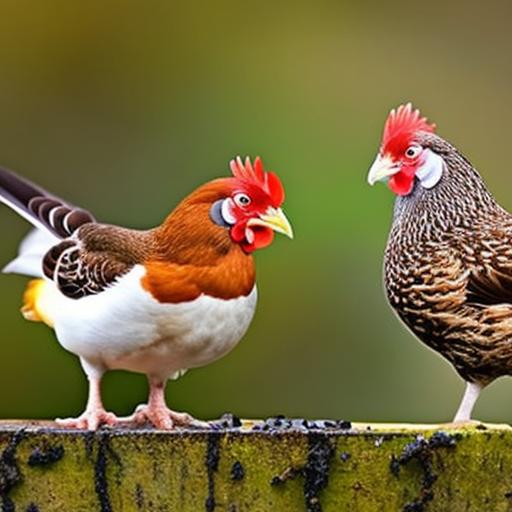Keeping chickens has become an increasingly popular hobby for many people, whether it be for the joy of watching these fascinating creatures or for the practical benefits of having fresh eggs and meat. Backyard chicken keeping has gained traction in recent years as more people seek to reconnect with nature and become more self-sufficient. In this article, we will explore the various aspects of keeping chickens, including the benefits, costs, and tips for reducing expenses.
Key Takeaways
- Keeping chickens has many benefits, including fresh eggs, pest control, and fertilizer production.
- The cost of keeping chickens can vary depending on factors such as location, coop size, and feed quality.
- Building a chicken coop can cost anywhere from a few hundred to a few thousand dollars.
- Chicken feed and supplements can add up, with costs ranging from to per month per chicken.
- To reduce costs, consider DIY projects, buying in bulk, and using natural remedies for chicken health care.
Benefits of Raising Chickens
One of the main benefits of keeping chickens is the availability of fresh eggs and meat. There is nothing quite like collecting eggs from your own backyard and knowing exactly where they came from. The taste and quality of homegrown eggs are far superior to store-bought ones. Additionally, raising chickens for meat provides a sustainable source of protein that is free from hormones and antibiotics.
Another joy of keeping chickens is observing their unique personalities and behaviors. Chickens are surprisingly intelligent and social animals. They have distinct personalities and can form strong bonds with their human caretakers. Watching them scratch around in the yard, take dust baths, or interact with each other can be highly entertaining and therapeutic.
Chickens also provide natural pest control and fertilizer for the garden. They love to eat insects, slugs, and other pests that can damage plants. By allowing chickens to roam freely in your yard, you can reduce the need for chemical pesticides. Additionally, their droppings make excellent fertilizer that can enrich the soil and improve plant growth.
Factors Affecting the Cost of Keeping Chickens
The cost of keeping chickens can vary depending on several factors. Location plays a significant role in determining expenses. Urban areas may have stricter regulations or require permits for keeping chickens, which can add to the cost. Rural areas generally have more lenient rules and larger plots of land available for free-ranging chickens.
The breed of chickens you choose can also affect costs. Some breeds are more expensive to purchase initially, while others may require special care or have specific dietary needs. It is essential to research different breeds and their requirements before making a decision.
The number of chickens you keep will also impact costs. More chickens mean more feed, bedding, and veterinary care expenses. It is crucial to consider the size of your flock based on your available space and budget.
The Average Cost of Building a Chicken Coop
Building a chicken coop is one of the initial expenses when starting with chickens. The cost can vary depending on the size, materials used, and whether you choose to build it yourself or hire someone to do it for you. On average, building a basic chicken coop can cost anywhere from $200 to $500.
There are different types of coops to choose from, including stationary coops, mobile coops (also known as chicken tractors), and converted sheds or outbuildings. Each type has its advantages and costs associated with it. Stationary coops are more expensive but provide a permanent structure for your chickens. Mobile coops are cheaper but require regular moving to provide fresh grazing areas for the chickens.
The Cost of Chicken Feed and Supplements
Chicken feed is an ongoing expense that needs to be factored into the cost of keeping chickens. The price of feed can vary depending on the type and quality. Basic commercial chicken feed typically costs around $15 to $30 for a 50-pound bag. Organic or specialty feeds can be more expensive.
Supplements such as calcium, grit, and oyster shells may also be necessary to ensure your chickens receive a balanced diet. These supplements can cost an additional $10 to $20 per month, depending on the size of your flock.
It is important to provide a balanced diet for your chickens to keep them healthy and productive. A well-balanced diet will also reduce the risk of illnesses and the need for costly veterinary care.
The Cost of Chicken Bedding and Litter

Keeping the chicken coop clean and dry is essential for the health of your chickens. Bedding and litter help absorb moisture and control odors. The cost of bedding can vary depending on the type and quantity needed.
Common types of bedding include straw, wood shavings, and shredded paper. Straw is the cheapest option, costing around $5 to $10 per bale. Wood shavings are slightly more expensive, ranging from $10 to $20 per bag. Shredded paper can be a cost-effective option if you have access to a large quantity of it.
It is important to regularly clean and replace the bedding to prevent the buildup of bacteria and parasites. This will help keep your chickens healthy and reduce the risk of costly illnesses.
The Cost of Chicken Health Care and Veterinary Services
Keeping chickens healthy is crucial to prevent costly illnesses and veterinary bills. Regular vaccinations, check-ups, and preventive treatments are necessary to maintain the well-being of your flock.
The cost of chicken health care can vary depending on the services required. Vaccinations typically cost around $2 to $5 per bird, depending on the type of vaccine. Check-ups and consultations with a veterinarian can range from $30 to $100 per visit.
Preventive treatments such as deworming or mite control may also be necessary. These treatments can cost an additional $10 to $20 per month, depending on the size of your flock.
The Cost of Chicken Fencing and Security Measures
Protecting your chickens from predators is essential for their safety. The cost of chicken fencing and security measures will depend on the size of your coop and the level of protection required.
Chicken wire is a common choice for fencing, costing around $0.50 to $1 per linear foot. Electric fencing can be more expensive but provides a higher level of security. The cost of electric fencing can range from $1 to $3 per linear foot.
Additional security measures such as predator-proof locks, motion-activated lights, and alarms may also be necessary. These measures can add to the overall cost but are essential for keeping your chickens safe.
The Cost of Chicken Accessories and Equipment
There are various accessories and equipment needed to provide a comfortable and safe environment for your chickens. These include feeders, waterers, nesting boxes, and roosting bars.
The cost of chicken accessories can vary depending on the quality and type. Basic feeders and waterers can cost around $5 to $10 each. Nesting boxes can range from $10 to $30 each, depending on the size and material. Roosting bars can be made from inexpensive materials such as wooden dowels or branches.
It is important to invest in good-quality accessories and equipment that will last. Cheaper options may need frequent replacement, which can add to the overall cost in the long run.
Tips for Reducing the Cost of Keeping Chickens
While keeping chickens can be a rewarding experience, it is important to find ways to reduce costs without compromising the health and safety of your flock. Here are some tips for saving money:
1. Buy feed in bulk: Purchasing feed in larger quantities can often result in significant savings. Look for local farmers or feed stores that offer bulk discounts.
2. Use recycled materials: Instead of buying new materials for your coop, consider using recycled or repurposed materials. This can save money and reduce waste.
3. Practice rotational grazing: Allowing your chickens to free-range in different areas of your yard can reduce the need for expensive fencing and provide fresh grazing areas.
4. Share resources with other chicken keepers: Consider forming a cooperative with other chicken keepers in your area to share resources such as feed, bedding, and equipment.
5. Grow your own chicken feed: Planting a small garden with chicken-friendly crops such as corn, sunflowers, and greens can provide a supplemental source of food for your flock.
Keeping chickens can be a fun and rewarding hobby or a practical way to have a sustainable source of fresh eggs and meat. While there are costs associated with keeping chickens, there are also ways to reduce expenses without compromising the health and safety of your flock. By considering factors such as location, breed, and number of chickens, as well as implementing cost-saving measures, you can enjoy the benefits of keeping chickens while keeping expenses under control.
If you’re interested in the average cost of keeping chickens, you might also want to check out this informative article on what vegetables quails eat. Quails are a popular alternative to chickens for backyard poultry enthusiasts, and understanding their dietary needs can help you plan your expenses more effectively. To learn more about the vegetables that quails enjoy, visit https://poultrywizard.com/keeping-quail/what-vegetables-do-quails-eat/. Additionally, if you’re looking for tips on building a chicken coop in Grand Island, Nebraska, or need advice on installing a heater in your existing coop, be sure to explore these helpful articles: https://poultrywizard.com/keeping-chickens/chicken-coop-grand-island-ne/ and https://poultrywizard.com/keeping-chickens/heater-for-a-chicken-coop/.
FAQs
What is the average cost of keeping chickens?
The average cost of keeping chickens varies depending on factors such as the number of chickens, the type of feed, and the cost of housing. However, on average, it can cost between $300 to $500 per year to keep a small flock of chickens.
What are the initial costs of keeping chickens?
The initial costs of keeping chickens include purchasing or building a coop, purchasing chickens, and buying feed and supplies. The cost of a coop can range from $200 to $1,000, while the cost of chickens can range from $3 to $30 per bird.
What are the ongoing costs of keeping chickens?
The ongoing costs of keeping chickens include feed, bedding, and healthcare. The cost of feed can range from $15 to $30 per month per bird, while the cost of bedding can range from $5 to $10 per month per bird. Healthcare costs can vary depending on the health of the flock and any necessary treatments.
What are some ways to reduce the cost of keeping chickens?
Some ways to reduce the cost of keeping chickens include buying feed in bulk, using natural methods for pest control, and building a coop instead of purchasing one. Additionally, raising chickens for eggs can help offset the cost of feed and supplies.
What are some unexpected costs of keeping chickens?
Some unexpected costs of keeping chickens can include veterinary bills for sick or injured birds, predator-proofing the coop and run, and replacing equipment that may break or wear out over time. It is important to budget for these potential costs when considering keeping chickens.
Meet Walter, the feathered-friend fanatic of Florida! Nestled in the sunshine state, Walter struts through life with his feathered companions, clucking his way to happiness. With a coop that’s fancier than a five-star hotel, he’s the Don Juan of the chicken world. When he’s not teaching his hens to do the cha-cha, you’ll find him in a heated debate with his prized rooster, Sir Clucks-a-Lot. Walter’s poultry passion is no yolk; he’s the sunny-side-up guy you never knew you needed in your flock of friends!







